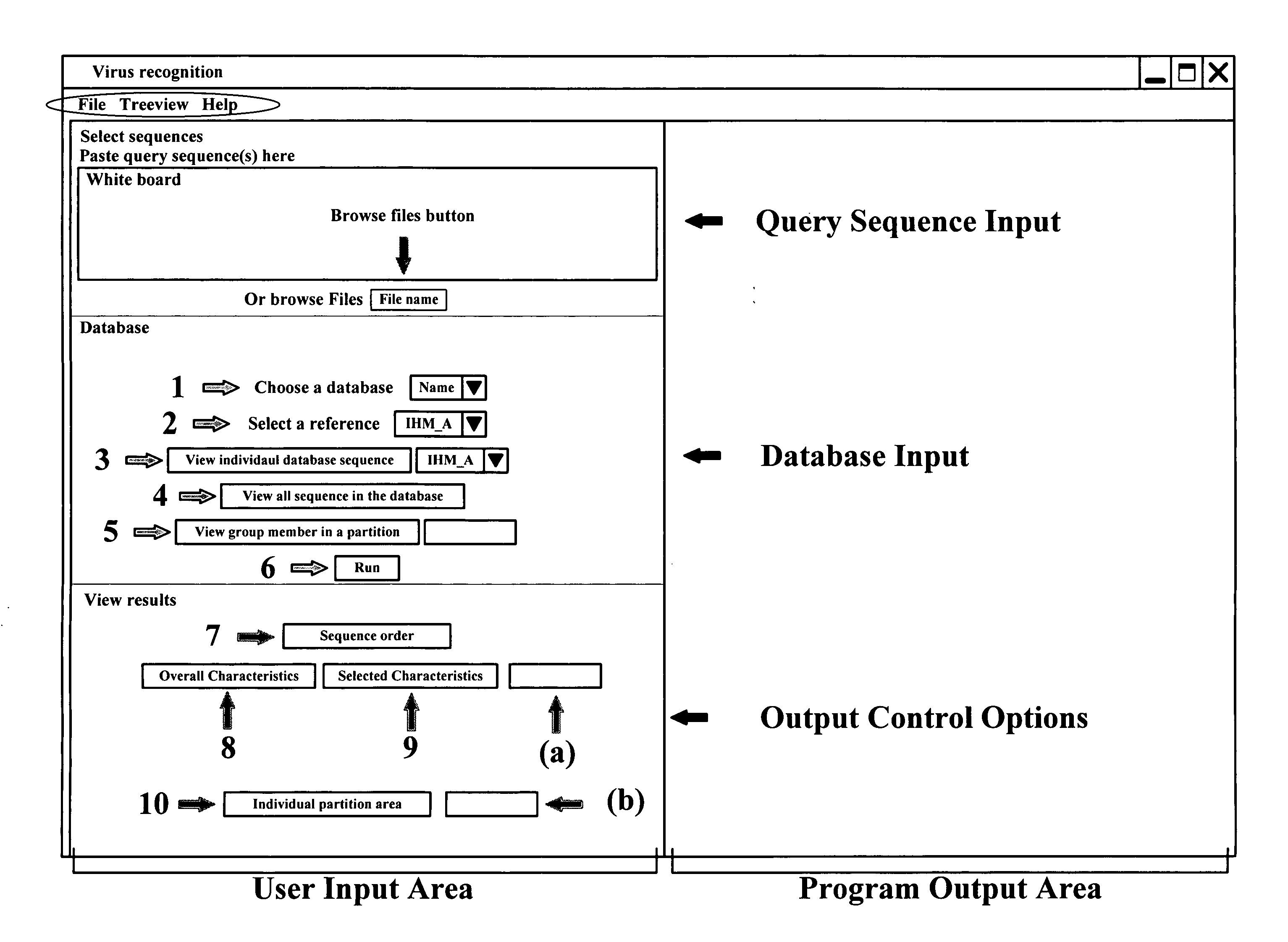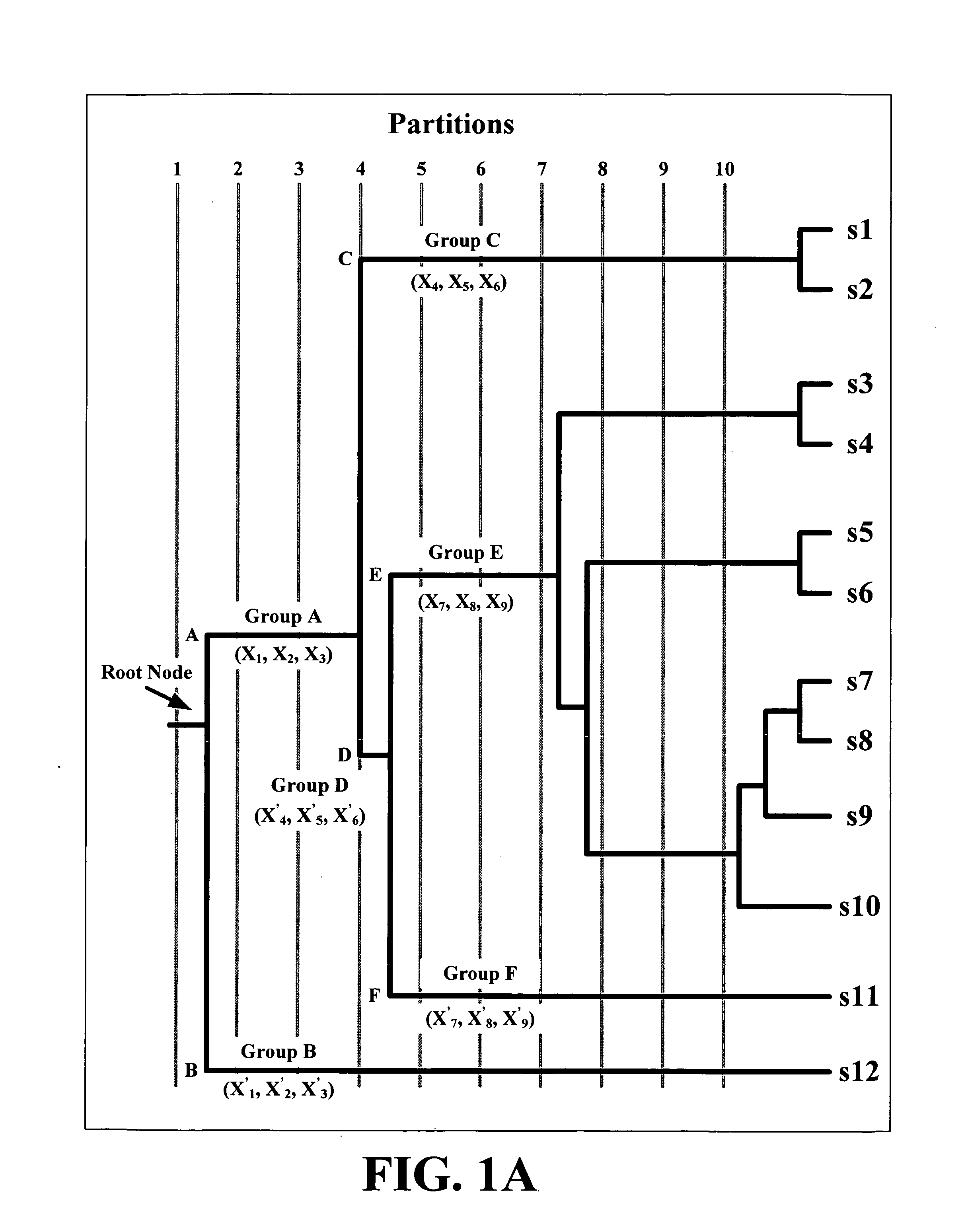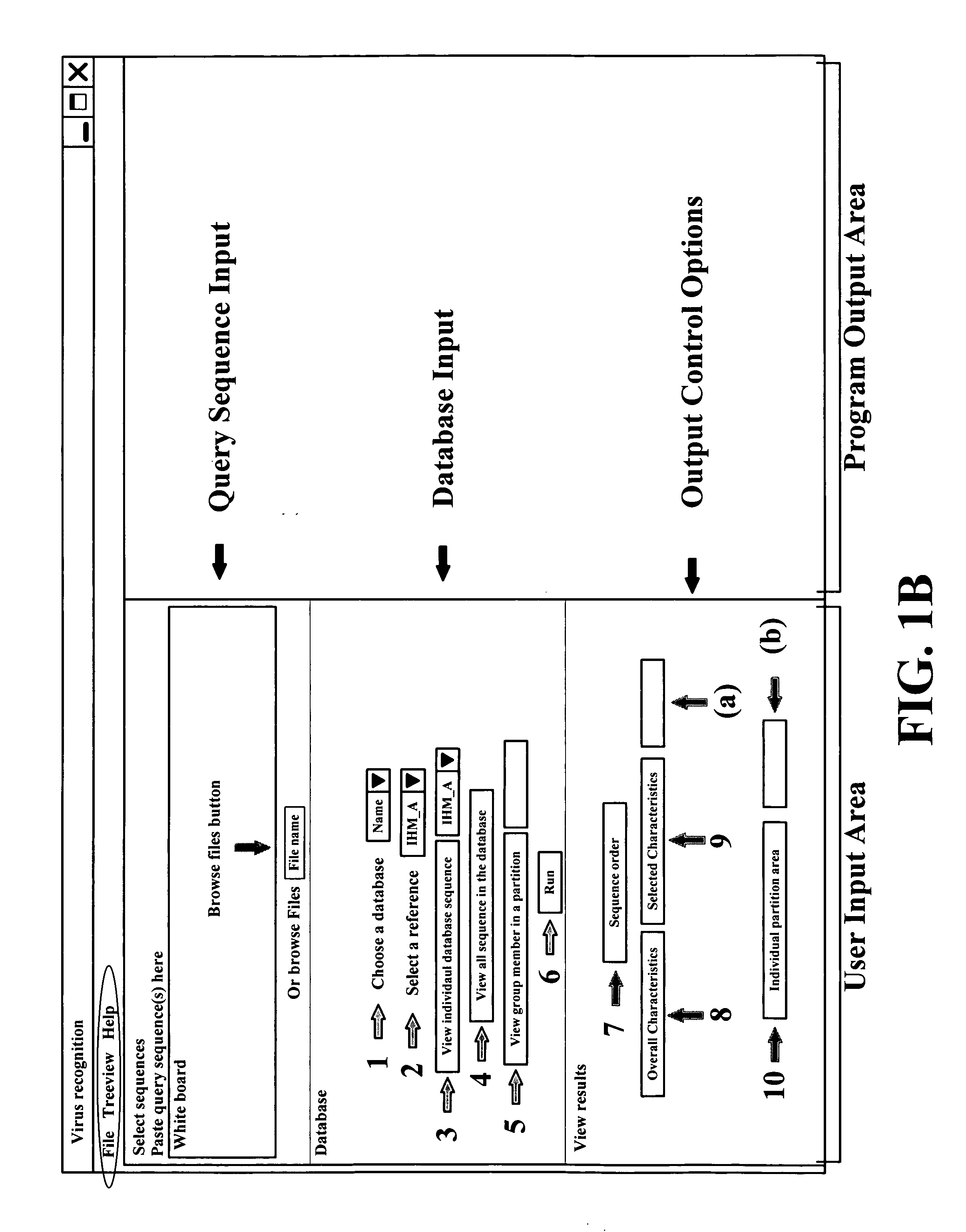Application package to automatically identify some single stranded RNA viruses from characteristic residues of capsid protein or nucleotide sequences
a technology of capsid protein and rna virus, which is applied in the field of application packages to automatically identify single stranded rna viruses from characteristic residues of capsid protein or nucleotide sequences, can solve the problems of high bio-terrorism related threats, no equipment or kits can unambiguously identify viruses, and the difficulty of distinguishing between these viruses and detecting them lies in their molecular details
- Summary
- Abstract
- Description
- Claims
- Application Information
AI Technical Summary
Benefits of technology
Problems solved by technology
Method used
Image
Examples
capsid embodiment
of the Invention
METHOD
Basis
[0068]The method relies on creating databases of capsid residues that uniquely distinguish among the reference calici and picornavirus sequences. Residue-wise comparisons of the complete or partial input target sequences with the databases yield those reference sequences that are closest to the target sequences. Such reference sequences, in turn, yield the genogroup and other classification characteristics of the target sequences thereby identifying their strains.
Partitioned Phylogenetic Trees Yield Groups of Similar Sequences
[0069]Following the procedure described earlier [40], evolutionary trace [41] based partitioned phylogenetic trees were constructed for each of the 4 calicivirus genera and the 9 picornavirus genera using a large number of complete capsid sequences from public domain databases [25, 42]. These sequences will be called the “reference” sequences and the corresponding trees will be called the “reference” or the “genus” trees as each such ...
mutations embodiment
Adaptive Mutations Embodiment of this Invention
Adaptive Mutations Explain Strain Diversification in Rhinoviruses and Noroviruses
[0147]Most single stranded RNA viruses adapt to host immune responses by rapidly mutating their capsid proteins to generate a large number of strains. An effective way to understand this strain diversity would be to decipher those capsid residues whose mutations may be linked to important determinants of host immune responses such as receptor binding and antigenicity. In the present study, we show using evolutionary trace based approach that a large number of the strain diversifying residues belong to the known receptor binding sites and some of the neutralizing sites of human rhinoviruses (HRV) thereby validating the ET approach earlier applied to noroviruses NoV). In both NoV and HRV, these capsid residues mostly line structurally spacious and inter-connected pockets. These pockets, perhaps, define major adaptation sites that structurally facilitate strai...
PUM
 Login to View More
Login to View More Abstract
Description
Claims
Application Information
 Login to View More
Login to View More - R&D
- Intellectual Property
- Life Sciences
- Materials
- Tech Scout
- Unparalleled Data Quality
- Higher Quality Content
- 60% Fewer Hallucinations
Browse by: Latest US Patents, China's latest patents, Technical Efficacy Thesaurus, Application Domain, Technology Topic, Popular Technical Reports.
© 2025 PatSnap. All rights reserved.Legal|Privacy policy|Modern Slavery Act Transparency Statement|Sitemap|About US| Contact US: help@patsnap.com



